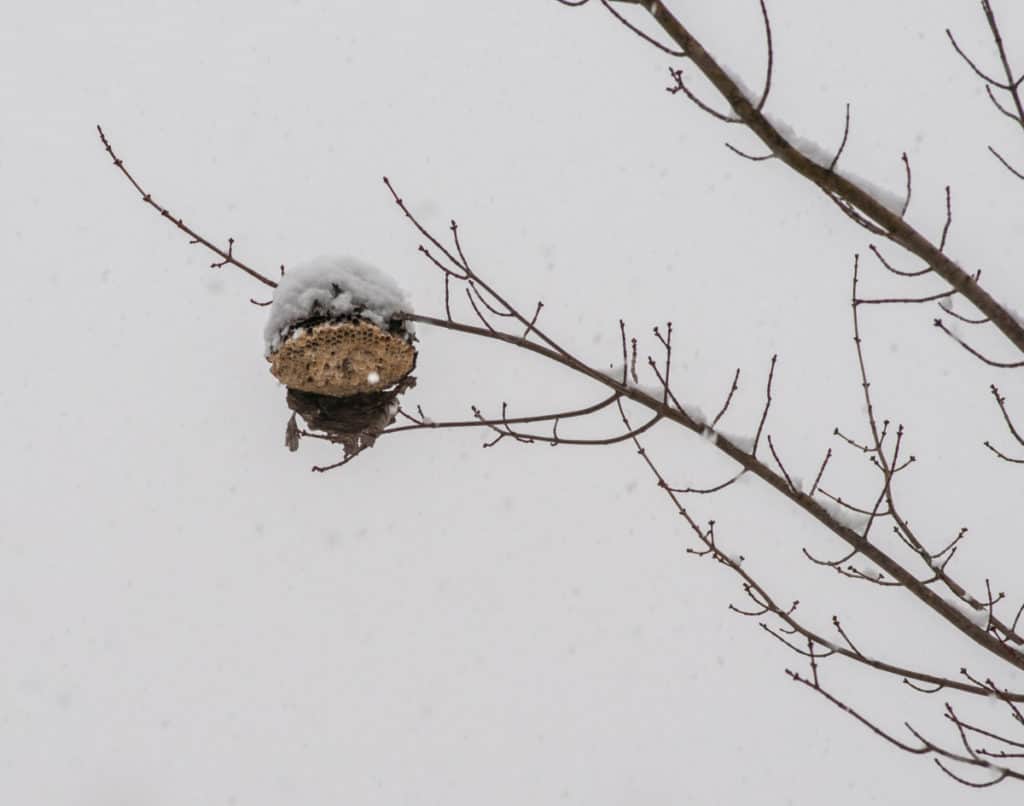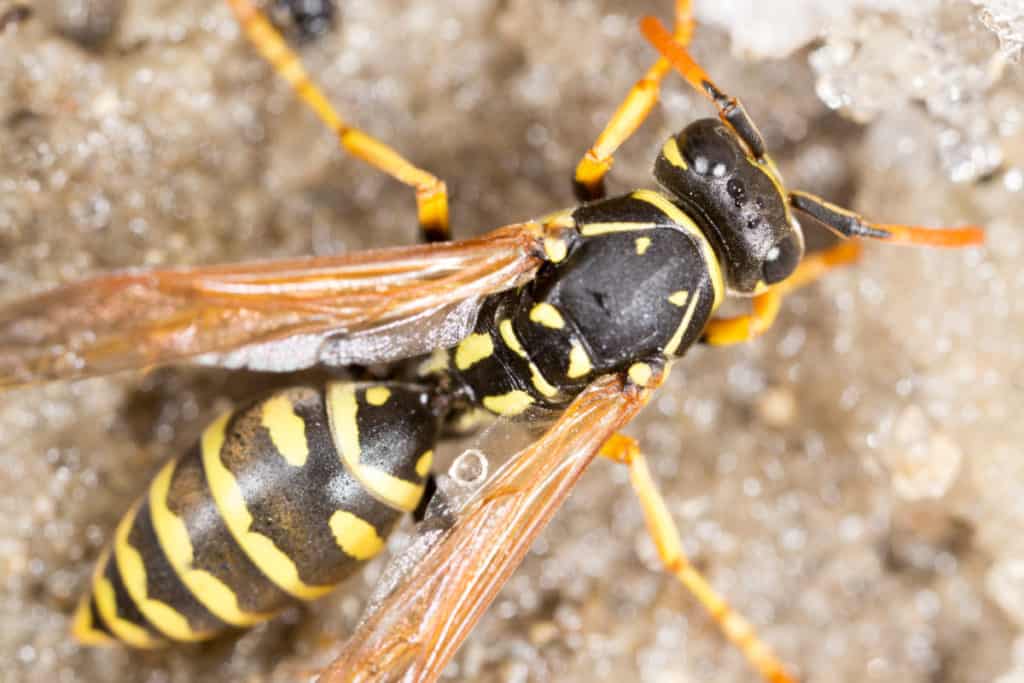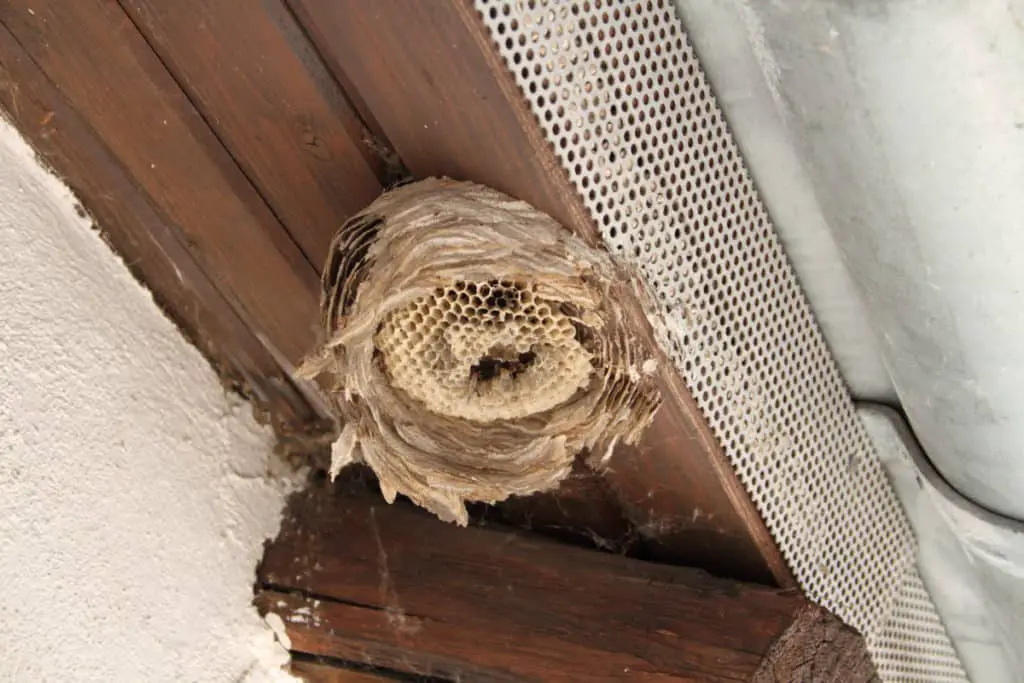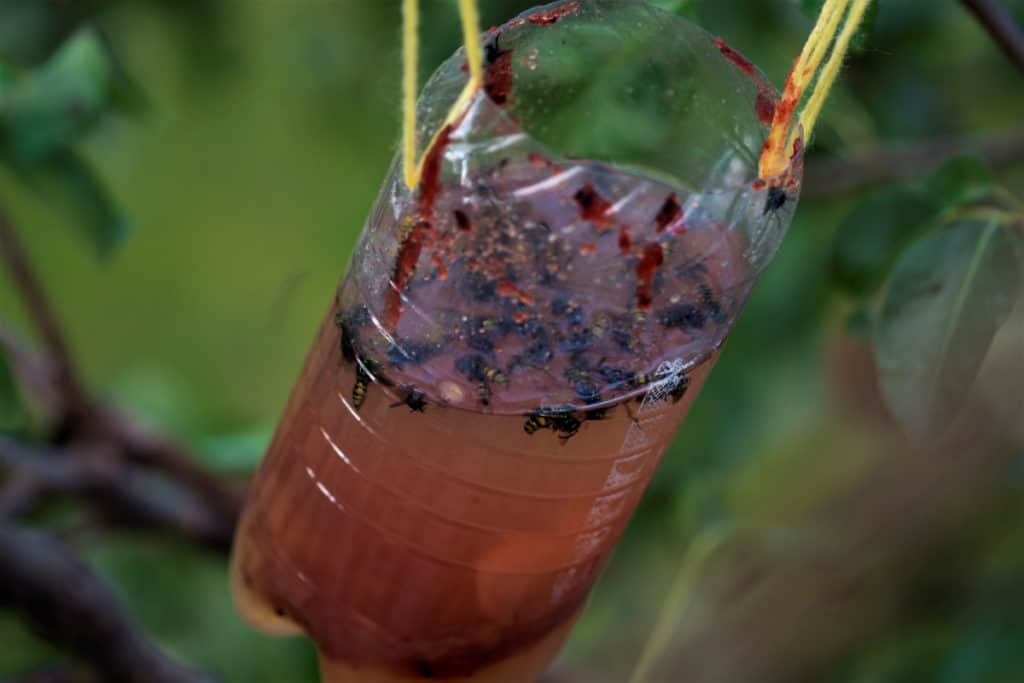Winter is drawing to a close. If you haven’t seen a wasp yet, you’re probably wondering where they are. Are they still in their cozy, warm nests and dreaming of spring? Or have they migrated in search of food and warmer weather?
One cannot help but wonder, what actually happens to wasps in winter?
As a general rule, in winter, most wasps die from cold and lack of food. A new generation of queens will mate late season. Mated queens leave the nests to find shelter hibernating for the winter. Queens emerge in spring to build nests and lay eggs. Solitary wasps only the pupa survive the winter.
Read on to learn more about how wasps in different seasons of the year and how you can get rid of them and their nests.
What Do Wasps Do During Winter?
As the weather becomes colder, the wasps’ population reduces drastically.

So What Happens To The Wasps?
As winter approaches, most male wasps die of cold weather (below 50° F or 10° C) and starvation. Before the males wither away, the last generations of the females waps mate so that they can lay fertilized eggs in the following spring. The females then leave their old nests, find sheltered areas for the winter and hibernate until spring. These females will be the future queens.
However, many female wasps die because they wake up too early and head into nature only to face limited food sources. Mild winters, artificial lights, and central heating are the main reasons for early hibernation. Predators such as spiders can eat them too.
As the spring kicks in, the queens start looking for suitable sites to build their nests and lay their eggs. They look after their eggs until they hatch into sterile females or workers. When fully grown, these wasps will help the queen take care of larvae and increase the colony’s size.
By mid-summer, the number of workers (5000 on average) will be enough to take on nourishment and nest maintenance responsibilities.
At this time, the queen lays the last set of eggs, which will become future queens or male drones. These wasps will leave their nest and mate with other wasps around autumn.
Cold weather and starvation affect yellow jackets and solitary wasps too. Except for the new queens, all of them die when the temperature falls below 50° F. However, the nest can survive in temperature-controlled environments such as garages, wall voids, or heated sheds.

We actually have a whole article that goes into detail about how temperature affects wasps. If you are interested the article is called, What Temperature Do Wasps Die At?
Is It Safe To Remove A Wasps Nest In The Winter?
Most wasps nests are empty in the winter, and they won’t be re-occupied the following year. So, you can get rid of them safely. However, be careful with live nests in December because some queens tend to stick around while the drones and workers die.

If the nest is small, you can inject some wasp insecticide at the entrance. Wasps carry the substance into the nest and spread it to other cells. The product damages the wasp’s nervous system and kills them.
The best time to do this is after sunset or before sunrise. At these times, wasps have returned home and don’t have much activity.
You can buy these products from garden centers or DIY stores. Don’t forget to wear protective clothes and gloves to avoid getting stung.
On the other hand, if the nest is large or at an inaccessible height, get help from a pest control company.
You’re not likely to see any wasp nests in January, February, and March. What you see is just a temporary shelter for fertilized queens who hibernate till early spring. You can simply ignore them.
Why Do I Find Wasps In My House in Winter?
Wasps are infamous for overwintering in houses. The future queens have to search for protected places to spend the winter before the first frost. These may include your attic, inside chimneys, around door or window frames. Fortunately, you don’t have to worry about wasps growing their nests since they hibernate in winter, and most of them die of starvation.
You’re highly unlikely to get stung during the winter, even by the most aggressive species.
The bad news is that by the end of summer or early autumn, the wasps will probably have had a chance to build their nest in your house, and now there’s enough of them to pose a genuine risk to you and your family. So, try to address the problem before the end of spring.
How To Prevent A Wasp Infestation
Wasps can enter your house through small passages, wall cracks, pipes, or little gaps in your roof.
The National Pest Management Association (NPMA) recommends stuffing these entry points with a silicone-based caulk, steel wool, or a combination of both. Homeowners should also replace weather strips and repair mortar joints to prevent wasps’ congregations.
Other Ways To Prevent Wasp Infestations
● Installing a standard fly screen stops wasps from wandering into your house and keeps you cool in the summer.
● Cover your food and shut your bin. Wasps have a sweet tooth and love to explore leftover meals. Keep your sweet snacks away from your windows and wash your trash can regularly.
● Use strong scents to prevent wasps from coming into the area. Fresh mint, thyme, eucalyptus, tomato stems, and ground coffee are helpful. For example, you can plant some mint in your garden or fill a box with mint and put it near your window.
- You can try using smoke like that from a bee smoker to try and get rid of wasps as well.
If wasps are already in your garden, house, or backyard, you probably have no choice but to get rid of them. There are some natural ways to go about it.
How To Get Rid Of Wasps Naturally
Although using insecticides might be the first option you consider, there are a few key reasons for not using toxic insecticides. For one thing, strong insecticides are often harmful to children and pets. They also increase the risk of cancer and other serious health issues.
So instead of using harmful chemicals, try natural ways to get rid of wasps. Here are a couple of things you can try:
Natural Insecticide Spray
Mix one tablespoon of peppermint oil with four cups of water. Pour the solution into a spray bottle and spray to the wasp nest directly. The best time to do so is in the early morning or at night when they’re asleep. The oil can kill larvas, eggs, and adult wasps.
DIY Wasp Traps
To build a trap, you need a clean plastic soda bottle. A large bottle works very well. Cut the neck portion of the bottle and overturn it into the body. Add two cups of apple vinegar, 2 cups of water sugar, and ¼ cup of dish soap to a bowl and stir the solution well.
Now, pour the solution into the bottle and place it in a quiet, sunny location. A breeze will carry the bait’s scent.
It’s better to make several traps and tie a heavy string around their necks. Hang the bottles from a tree limb or fence post about four feet high (120 cm).
Check the bottles often to remove the drowned wasps and refill with the bait. Before removing the wasps, make sure all of them are dead. A survivor may still be capable of stinging you. Bury the dead wasps or put them in a plastic bag and throw it away.

Also, never squeeze the wasps while you dispose of them as their bodies release a chemical that signals other wasps to invade.
HOT TIP: Since wasps reproduce during spring and summer, they look for protein-rich foods. So, put a piece of rotten meat or tuna with plain water inside the bottle. By the end of summer, they have a craving for sweets. Instead of sugar, you can use root beer, colas, fruit juices, or diluted jams.
We do have an entire article on the diet of wasps. If you’re interested it’s called, What do Wasps Eat?
The Wrap Up
Wasps do useful jobs in our garden. They kill insect pests and contribute to pollination. As winter approaches, their population falls sharply because most of them die from starvation and cold weather. The new queens, however, survive to build their nests and lay eggs in the next spring.
If you find wasp nests around your property in winter, you can remove them safely. You can also prevent them from lurking around your house by installing a flyscreen, covering your food, and keeping your bin clean. To get rid of them, you can use peppermint oil or make a trap with plastic bottles.
We have some other articles about how other bugs take on the chilly winter temperatures. If you are interested check them out below:
Do Clover Mites Die In Winter?
How Do Bees Survive The Winter?
Sources
https://www.accuratepestcontrolmanagement.com/blog/what-happens-to-wasps-and-hornets-over-winter
https://metro.co.uk/2017/09/16/when-do-wasps-die-off-6931449/
https://www.hastings.gov.uk/environmentalhealth/strategies_policies/ehs_enforce_policy/
https://bpca.org.uk/News-and-Blog/wasp-control-how-to-get-rid-of-wasps-bpca-a-z-of-pests
https://www.pestuk.com/blog/wasps-autumn-pest-control-south-england/
https://gpmpest.co.uk/news/when-wasps-die-off-nests/
https://www.bobvila.com/articles/bob-vila-radio-bee-wasp-control/
https://www.jcehrlich.com/blog/where-do-wasps-go-in-the-winter/
https://www.trulynolen.ca/are-there-wasps-in-house-this-winter/
https://www.bigbluebug.com/blog/post/wasp-nests-in-the-winter
https://www.getsurrey.co.uk/news/surrey-news/what-theres-wasps-nest-beehive-14756043
https://thepestexpertsayrshire.co.uk/how-to-prevent-wasps-from-being-attracted-to-your-home/
https://homeguides.sfgate.com/cheap-way-kill-wasps-92157.html
https://www.bobvila.com/articles/homemade-wasp-trap/
https://www.youtube.com/watch?v=aR1sM1YTIU4
https://npmapestworld.org/default/assets/File/member-center/PestGazette%20winter2018.pdf
